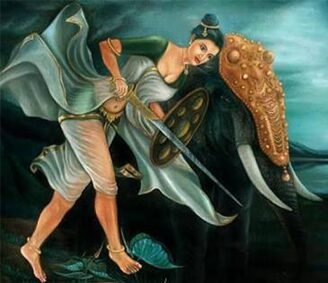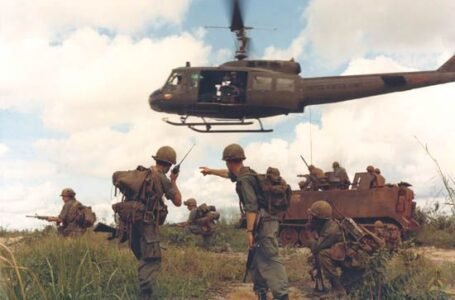Rajput Regiment – From Ancient Warriors to Modern Soldiers

-Trushti Dand
The Rajput Regiment is one of the oldest and most prestigious infantry regiments of the Indian Army. Its roots can be traced back to the 18th and early 19th centuries under the East India Company, which recognized the fighting spirit and loyalty of Rajput warriors. Many Rajputs had served in princely armies and regional forces long before British recruitment. The formal lineage of the regiment began with the formation of units like the 31st Rajput Regiment of Bengal Infantry in the British Indian Army. In 1922, as part of a reorganization, several Rajput-class units were grouped into the new 7th Rajput Regiment, comprising six battalions. After independence, this regiment was renamed the Rajput Regiment and became an integral part of the Indian Army. The regiment’s composition has remained predominantly Rajput—drawn from regions like Uttar Pradesh, Rajasthan, and Bihar—upholding a centuries-old warrior ethos.
Role in British Campaigns and Colonial Wars
During British rule, Rajput soldiers were active participants in many significant wars. They served in the Second Anglo-Afghan War (1878–1880), the Third Anglo-Burmese War (1885–1887), and campaigns in the North-West Frontier. Their discipline and bravery earned them respect in British ranks. One of the most notable moments in colonial service was the Battle of Ahmad Khel (1880) during the Afghan war, where Rajput units showed tremendous gallantry under difficult conditions. They were also deployed to Africa and China during imperial expeditions. In the early 20th century, Rajput battalions became key components of the British Indian Army’s frontier and overseas operations, building a legacy of commitment, professionalism, and martial prowess that carried into the World Wars.
Contribution in World War I (1914–1918)
The Rajput Regiment played a vital role during the First World War, contributing several battalions to different battlefronts. Units like the 2nd Battalion, 7th Rajput Regiment (formerly 2nd Battalion, 15th Rajput Regiment) served in the Mesopotamian Campaign, supporting the British push against Ottoman forces. They were involved in the capture of Basra and the prolonged and difficult operations around Kut-al-Amara. Other Rajput units served in Egypt and Palestine, where they fought against Ottoman-German forces, enduring desert warfare and logistic challenges. Their role in trench warfare and mobile desert operations was crucial to the British Indian Army’s efforts in the Middle East. Rajput soldiers earned several decorations, including Military Crosses, Distinguished Service Orders, and Indian Order of Merit citations, recognizing individual and collective acts of valor.
Role in World War II (1939–1945)
Rajput battalions again played a significant part in the Second World War. They were deployed across Africa, Southeast Asia, and Italy. The 4th Battalion, 7th Rajput Regiment was part of the British Eighth Army in North Africa, taking part in key battles such as El Alamein, where Allied forces halted Rommel’s advance. Rajput soldiers also served in Burma, engaging Japanese forces in jungle warfare during the Arakan operations and the battles of Kohima and Imphal. The 3rd Battalion fought in the Italian Campaign, helping to break through the German Gustav Line. These battalions adapted to various terrains—deserts, mountains, jungles—proving their resilience and versatility. During the war, the regiment earned multiple honors and contributed to the broader Allied victory in Asia and Europe.
Post-Independence Role and Wars with Pakistan and China
After 1947, the Rajput Regiment continued as a prominent infantry formation in the Indian Army. It played a critical role in the Indo-Pak War of 1947–48, securing positions in Jammu and Kashmir and repelling tribal and regular Pakistani incursions. During the Indo-China War of 1962, the 2nd Battalion fought in the NEFA sector, facing Chinese forces under severe logistical and geographical disadvantages. Despite setbacks, they showed notable bravery.
In the Indo-Pak War of 1965, Rajput battalions were part of key operations such as Operation Ablaze and Operation Grand Slam, securing vital posts in Jammu and Kashmir. In the 1971 Bangladesh Liberation War, they played an active role on both Eastern and Western fronts. The 4th Battalion was involved in heavy fighting in the Shakargarh sector, while other battalions helped liberate regions in East Pakistan (now Bangladesh), contributing to India’s decisive victory and the creation of Bangladesh.
Notable Battles and Gallantry Awards
The Rajput Regiment has taken part in numerous battles across its long history, earning a reputation for fierce combat and dedication. Among the most notable is the Battle of Rezang La (1962), where Major Shaitan Singh, although technically from the Kumaon Regiment, operated alongside Rajput-class soldiers and was posthumously awarded the Param Vir Chakra. In the 1965 war, the 6th Battalion played a significant role in repelling Pakistani forces in Kashmir. The 4th Battalion earned acclaim during the Battle of Jessore (1971) in East Pakistan.
The regiment has received 1 Param Vir Chakra, 4 Ashoka Chakras, 12 Maha Vir Chakras, and over 60 Vir Chakras, in addition to hundreds of Sena Medals and Mention-in-Despatches. These awards reflect the bravery, leadership, and sacrifice of Rajput soldiers on multiple fronts.
Prominent Officers
Many distinguished officers have served in the Rajput Regiment. Major General Rajinder Singh “Sparrow”, though later commanding an armored division, began his service with the Rajput Regiment and earned the Maha Vir Chakra during the 1947–48 war. Brigadier Hoshiar Singh, a senior Rajput officer, was killed in action during the 1962 war in NEFA, remembered for his courageous leadership. Over the decades, Rajput Regiment officers have held high positions, including Army Commanders, Director Generals of Infantry, and senior staff in strategic commands. Their leadership has shaped the regiment’s operational doctrine and upheld its legacy in India’s military hierarchy.
Organization and Training
The Regimental Centre of the Rajput Regiment is located at Fatehgarh, Uttar Pradesh. The regiment comprises 20 active battalions, supported by several Territorial Army and Rashtriya Rifles battalions. The regiment recruits primarily from the Rajput community across northern India. It functions as a single-class regiment, maintaining cultural and linguistic cohesion among troops.
Training emphasizes physical endurance, high-altitude combat, counterinsurgency, and conventional warfare. The Centre is responsible for basic training, battle drills, weapons handling, and instilling regimental traditions. Several battalions are deployed in counter-insurgency operations in Jammu & Kashmir and the North East, where their discipline and combat readiness have been invaluable. Their participation in United Nations Peacekeeping Missions, including in Sudan, Lebanon, and Congo, further demonstrates their global operational profile.
Regimental Identity, Symbols, and Traditions
The Rajput Regiment’s insignia consists of a pair of crossed daggers (katar) surmounted by the Ashoka Lion emblem, symbolizing honor, strength, and duty. The regiment’s war cry is “Bol Bajrang Bali ki Jai!”, invoking Lord Hanuman, a revered deity among Rajputs for strength and courage. The regimental motto is “Sarvatra Vijay” meaning “Victory Everywhere.”
The regiment celebrates important festivals like Rajputana Day and Regimental Raising Day, along with honoring major battles and fallen heroes. Ceremonial parades and religious observances maintain unit cohesion and preserve historic continuity. The traditional Rajput warrior identity—valor, pride, loyalty, and sacrifice—remains central to regimental ethos. Recruits are often told the stories of legendary Rajput figures such as Maharana Pratap and Prithviraj Chauhan, reinforcing their martial heritage.
Cultural Significance and Community Pride
The Rajput Regiment is deeply embedded in the cultural pride of the Rajput community, known for its warrior tradition. Rajputs have historically served as kings, nobles, and feudal lords across Rajasthan, Uttar Pradesh, and Madhya Pradesh. Their values—bravery, honor, and a sense of duty—are woven into the regiment’s character. Families across generations have served in the Rajput Regiment, creating a legacy of military service and national loyalty.
The regiment has contributed to the national imagination through films, literature, and public commemorations. Stories of Rajput valor are taught in schools and remembered in army folklore. Monuments, museums, and war memorials—including in Fatehgarh and India Gate—honor their service. The community takes immense pride in its soldiers, whose performance in battle has reinforced Rajput identity within India’s secular and multicultural armed forces.
Legacy and Continuing Relevance
The Rajput Regiment’s legacy spans over 250 years, from early colonial units to modern mechanized infantry. Its record in both World Wars, post-independence wars, and peacekeeping missions reflects unmatched versatility and endurance. It continues to uphold the highest standards of the Indian Army. With battle honors such as El Alamein, Basra, Kut-al-Amara, Imphal, Jessore, and Kargil, the regiment has a place of honor in Indian military history.
Modern Rajput battalions are fully integrated into India’s rapid deployment forces and high-altitude units. They train with new technology, weapons systems, and joint-force doctrines, all while preserving ancient traditions and values. The regiment’s veterans remain active in ex-servicemen’s welfare, community outreach, and civil-military relations. The Rajput Regiment is a symbol of how India’s traditional warrior communities have adapted to modern military professionalism, continuing to serve with distinction across the country and abroad.
Conclusion
The Rajput Regiment stands as a living example of India’s martial continuity, from the swords of Rajputana to the rifles of modern infantry. Whether in colonial wars, global conflicts, or national defense, its soldiers have demonstrated exceptional valor and sacrifice. Deeply rooted in cultural pride and military discipline, the regiment continues to defend India’s sovereignty with honor. As it moves forward, the Rajput Regiment remains an enduring symbol of loyalty, courage, and national service—true to its heritage, yet always ready for the future.


